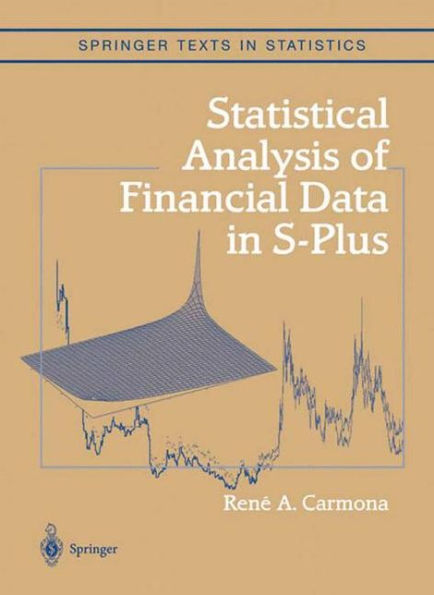From the reviews:
As can be seen from the chapters’ contents, the breadth of topics covered of this book is impressive. Overall, this is a very nice book for introducing students to a variety of models for analyzing financial data." Journal of Statistical Software, June 2004
"The author, a fellow of the Institute of Mathematical Statistics, presents a solid dose of theory and methodology." Technometrics, May 2005
"This book is a text for an undergraduate course in data analysis focused on financial applications. It is not an S-Plus book but rather covers the main problems arising in data analysis techniques in financial engineering..As the book is based on lectures for a course on statsitical analysis of financial data, a trade off between the depth at which the toics are presented and the computational implementations are kept in balance. This textbook will be very helpful for a general course in financial engineering." The American Statistician, November 2005
"This textbook appears to be primarily intended as an introduction to statistical analysis of financial data … . the book provides the reader with a practical computational approach to financial analytical techniques. It should appeal to instructors who prefer an applied-based text to a theoretical one. I enjoyed the use of simulation based illustrations and will be using some of the ideas in the future. The book could be used for teaching a third-year undergraduate or post-graduate (honours level), course in a statistics department or in a program designed for finance." (Gary D Sharp, SASA News, March, 2006)
"S-plus, a popular software for statisticians, has many books devoted to teach it. … the book would be very good choice as a lab manual providing many useful rules of thumb. … the book doubtlessly provides a pleasant introduction to statistics using S-plus. The friendly tone throughout certainly adds to the charm. Simple yet detailed exercises at the end of each chapter offer a gentle massage for the brain." (Arnab Chakraborty, Sankhya, Vol. 66 (3), 2004)
"This is an excellent text, written by a well known expert in the field, dealing with statistical analysis of financial data. … As remarked by the author, the emphasis of the book is on graphical and computational methods for the analysis of financial data. … The book is clearly written and remarkably free of typos. I believe it will be a very useful addition to the existing books and I highly recommend it." (Pedro A. Morettin, Zentralblatt MATH, Vol. 1055, 2005)
"This is a timely book on modern data analysis with a difference: the examples and applications are predominantly taken from Finance Engineering. … This book will help fill a statistical gap in the otherwise heavily theoretical literature in mathematical finance." (D. L. McLeish, Short Book Reviews, Vol. 24 (2), 2004)
"The seven chapters are an excellent resource to anyone wishing to learn more about the application of statistics to financial data. … A comprehensive reference section is given and the book has the S-PLUS codes that are needed to perform the statistical modelling. … The reference section is extremely useful and comprehensive. Libraries should be encouraged to purchase copies of this text for undergraduate and post-graduate students in finance and statistics." (Isaac Dialsingh, Significance, Vol. 3 (3), 2006)




